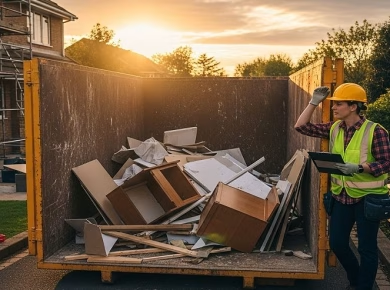When the sun dips below the horizon and darkness envelops construction sites, the stakes for safety rise significantly. I’ve been on enough job sites to recognize that visibility is crucial—not just for compliance but for the well-being of every worker present. Enter 3M Reflective Tape, a product that often doesn’t get the attention it deserves but has proven itself a steadfast ally in nighttime visibility.
The Importance of Visibility in Construction Safety
In the construction industry, the importance of visibility cannot be overstated. Poor lighting conditions can lead to accidents that are entirely preventable. I’ve witnessed firsthand how a lack of visibility can turn a routine task into a hazardous endeavor. Reflective materials play a pivotal role in enhancing visibility, making it easier for workers to see potential hazards and for equipment operators to spot personnel in their path.
3M Reflective Tape is not just a product; it is a safety measure that can literally save lives. Its high reflectivity means that even the faintest light, whether from a vehicle’s headlights or a worksite’s ambient lighting, can illuminate marked areas and equipment. This ensures that workers are aware of their surroundings, even in the dimmest of conditions.
Real-World Applications of 3M Reflective Tape
While many professionals are familiar with reflective tape, its applications in the field are often underutilized. From marking hazardous areas to labeling equipment, the versatility of 3M Reflective Tape is remarkable.
Marking Hazards and Pathways
One of the most effective uses I’ve seen is for marking hazardous areas and pathways. On a recent project, we had to work late into the night due to project deadlines. The site was littered with potential trip hazards—equipment, cords, and materials scattered everywhere. By applying 3M Reflective Tape to these objects, we transformed a treacherous environment into a navigable space. Workers were able to see the tape reflecting light, guiding them safely through the site and helping them avoid accidents.
Equipment Visibility
Another critical application is enhancing the visibility of equipment. Construction machinery can be difficult to spot, especially at night. Adding strips of 3M Reflective Tape to the edges of equipment not only makes it visible but also alerts nearby personnel to its presence. I’ve had operators thank me for insisting on this practice; it gives them peace of mind knowing that their vehicles are less likely to be involved in an accident.
Choosing the Right Type of 3M Reflective Tape
Not all reflective tape is created equal. It’s essential to choose the right type based on your specific needs. 3M offers various products designed for different applications, each with unique features that cater to various environments.
Types of Reflective Tape
For construction purposes, the two most relevant types are the high-intensity and engineer-grade reflective tapes. High-intensity tape is better suited for high-traffic areas, as it provides superior reflectivity and durability. Conversely, engineer-grade tape is more than adequate for less demanding applications, such as marking pathways or low-risk areas.
Understanding the environment in which the tape will be used is critical. Is it exposed to harsh weather conditions? Will it be subject to abrasions or chemicals? These questions will guide you in selecting the right product.
Installation Tips for Maximum Effectiveness
Even the best reflective tape won’t achieve its full potential if not applied correctly. Here are some practical tips based on experiences from the field.
Surface Preparation
Before applying 3M Reflective Tape, ensure that the surface is clean, dry, and free from dust or grease. I’ve learned the hard way that any contaminants can prevent the tape from adhering properly, leading to premature failure. A simple wipe-down with isopropyl alcohol usually does the trick.
Correct Application Techniques
When applying the tape, take your time to avoid bubbles or wrinkles. Start from one end and gradually work your way to the other, smoothing it down as you go. For corners and curves, cutting the tape at angles can help it conform more easily to the surface.
Compliance and Best Practices
In many regions, safety regulations mandate the use of reflective materials in specific scenarios. It’s crucial to stay informed about local safety standards and ensure that your site adheres to them. Compliance isn’t just about avoiding penalties; it’s about creating a culture of safety.
Moreover, incorporating 3M Reflective Tape into your safety training programs can significantly enhance awareness and adherence to safety protocols. When every worker understands the importance of visibility and how to use reflective materials effectively, the entire team benefits.
Conclusion: Elevating Safety Standards with Simple Solutions
As professionals in construction, health and safety, site management, or compliance training, we have a responsibility to prioritize the safety of our teams. 3M Reflective Tape may seem like a small component of a much larger safety strategy, but its impact is undeniable. By enhancing visibility in low-light conditions, we can prevent accidents and create a safer work environment.
As you move forward, consider how you can integrate reflective tape into your safety practices. Small changes can lead to significant improvements, ensuring that every worker returns home safely at the end of the day. Embracing products like 3M Reflective Tape is not just a best practice; it’s a commitment to excellence in safety.



